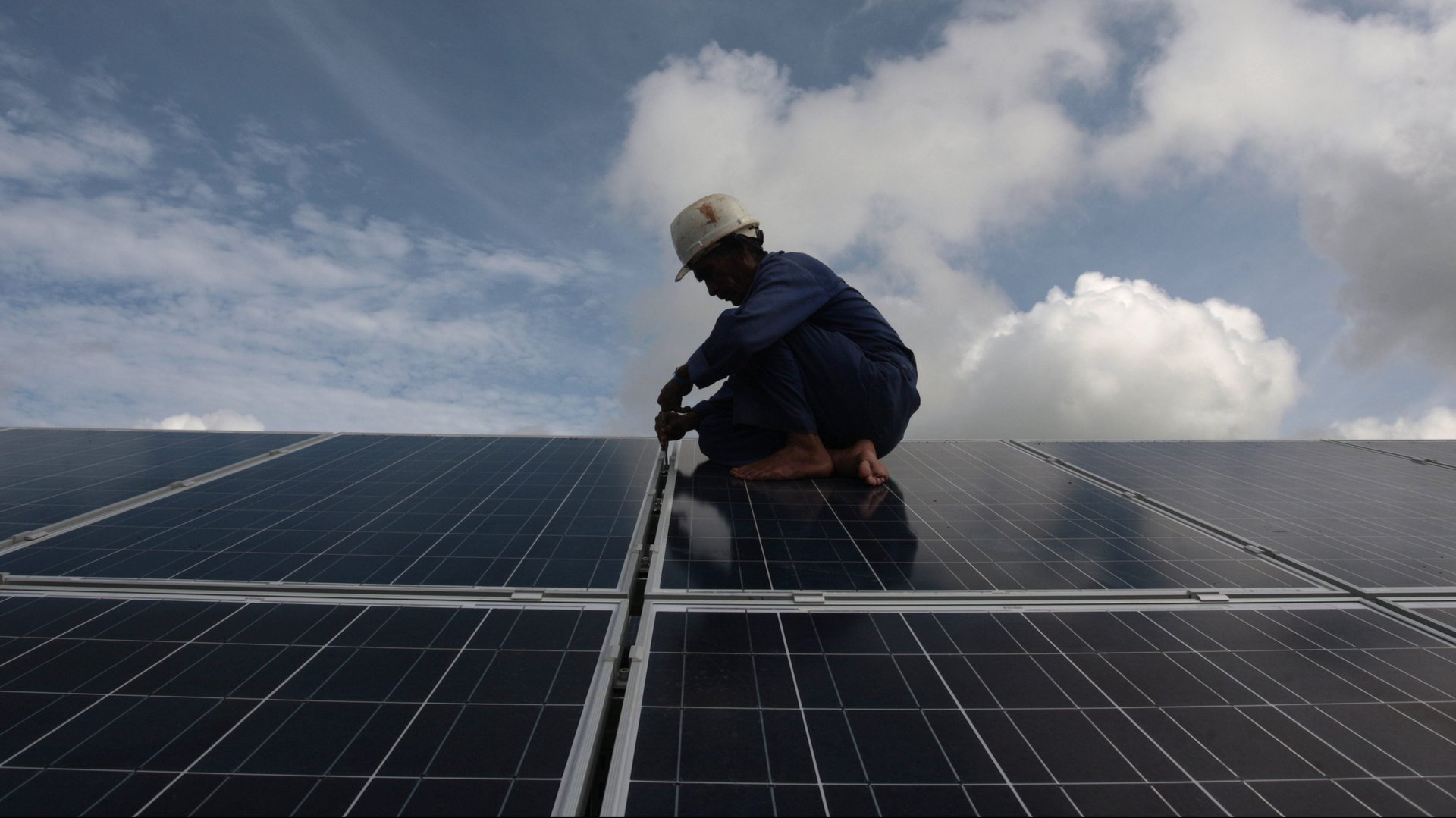Job creation in India’s renewable energy industry more than halved last fiscal
India’s renewable energy industry is not as hot anymore, and jobs have become harder to come by.


India’s renewable energy industry is not as hot anymore, and jobs have become harder to come by.
Only about 12,000 new workers found employment at solar and wind projects in the financial year ended March 2019, compared with over 30,000 in the previous year, according to a report by the Council on Energy, Environment and Water (CEEW), a non-profit based in New Delhi, and the National Resources Defence Council (NRDC), another non-profit based in New York.
Slower job creation has rattled several industries in India. Though the Indian economy is growing fast, it is widely perceived as failing to provide adequate employment to a burgeoning number of young people who are ready to join the workforce.
Renewable energy jobs are created in the planning, construction, and maintenance of solar and wind farms as well as rooftop solar panels. In 2015, prime minister Narendra Modi’s government set an ambitious target to scale up India’s solar and wind power capacity to 160 gigawatts by 2022.
Capacity addition ramped up soon after the target was announced, but has slouched over the last year, with slow adoption of rooftop solar panels and investors growing wary over the viability of the large-scale projects auctioned by the government.
Though it appears increasingly unlikely, if India were to meet the renewable energy target on time, over 200,000 additional workers would enter the industry, CEEW and NRDC estimate. This is based on a formula they have developed after surveying 54 renewable energy firms for the number of new jobs created per megawatt of solar or wind capacity addition.
Roof jobs
Since it is much more labour intensive, rooftop solar technology creates far more jobs, compared with large-scale solar and wind projects.
Moreover, unlike coal-fired power plants or solar and wind farms, which are usually situated in far-off places, job opportunities in rooftop solar projects are better spread out across the country, said CEEW’s chief executive officer Arunabha Ghosh. Workers don’t have to worry about finding housing for their families, and climatic conditions are also not as harsh as, say, when working on a solar farm in the desert of northern Rajasthan state, he added.
Over the long run, rooftop solar technology can be a cheaper source of power for consumers than electricity supplied through the grid. But due to the high cost of buying the panels, it has struggled to find wider adoption among Indian households. And even though credit options are available for commercial and industrial consumers, permission regimes for setting up connections and related policies vary widely from state to state.
As a result, rooftop solar capacity currently lags the farthest from its government-set target.